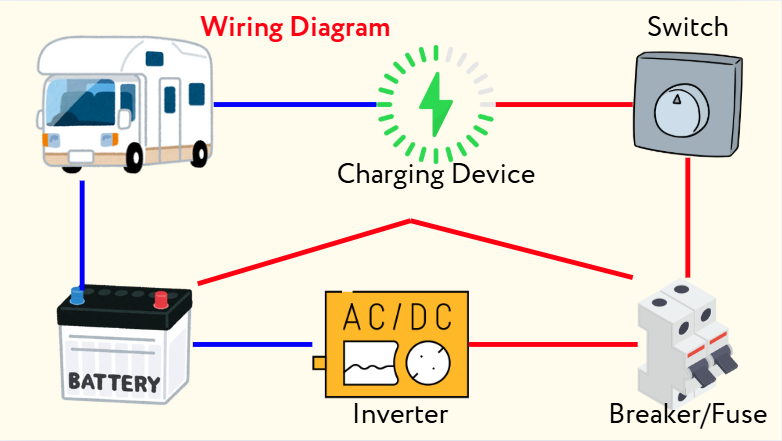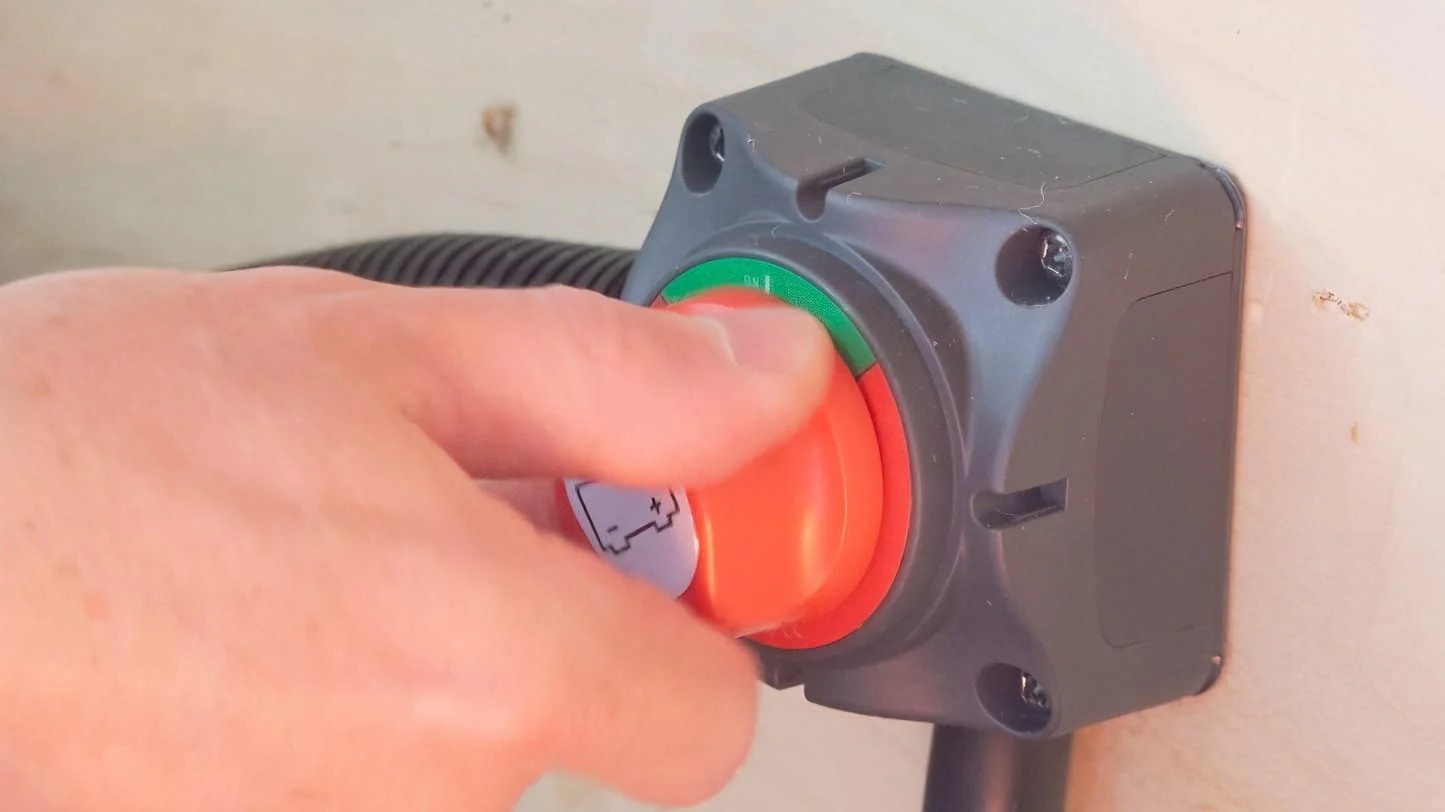Should I Disconnect My RV Battery When Plugged In?
RV owners face a common dilemma: what's the best way to manage your battery when connected to shore power? Whether you're camping in a national park or at a local RV resort, understanding battery maintenance can save you hundreds of dollars in potential repairs. Many RV enthusiasts struggle with conflicting advice about disconnecting batteries, leaving them uncertain about the right approach to protect their valuable investment.
Improper battery management can turn your dream camping trip into a frustrating experience. From potential electrical system damage to unexpected battery failure, the risks are real. This comprehensive guide will walk you through expert-recommended practices to keep your RV's battery in top condition and your adventures running smoothly.
Is it bad to leave your RV plugged in all the time?
In general, it is safe to leave an RV plugged in all the time. Keeping it plugged in all the time won't harm your RV. This is because the majority of RVs now come equipped with built-in smart chargers.
Modern RVs feature advanced converters that ensure safe, continuous power connections. These systems convert AC from shore power or generators to 12V DC and regulate battery charging to prevent overcharging, protecting your RV's electrical system and batteries.

It's best to read the manual that comes with your RV or check the model of the power distribution panel to see if it has a built-in converter, preferably with a float mode. If not, don't worry; we'll discuss some solutions to ensure you don't find your battery dead the next time you take your RV out of storage.
Should RV batteries be disconnected when not in use?
For short-term storage (up to a month), it's generally fine to keep your RV plugged in. However, for long-term storage, especially if your RV has an older or less efficient converter/charger that might overcharge the battery, it's wise to disconnect the RV battery to avoid damage. If you're storing your RV for an extended period, particularly in very cold weather, consider fully disconnecting the house batteries and storing them in a warmer place for the winter. This precaution helps prevent battery drain and damage, ensuring your RV is ready to go when you need it.
Potential issues of leaving an RV plugged in continuously
Leaving your RV continuously connected to shore power isn't as straightforward as it might seem. While modern RVs come equipped with advanced battery management systems, prolonged and unmonitored charging can potentially harm your battery and electrical components.
Three primary concerns emerge when RV batteries remain constantly connected:
- Battery Overcharging: Modern converters with smart charging can mitigate this risk, but older systems may continuously push current, causing battery fluid to evaporate and internal components to degrade prematurely.
- Sulfation Buildup: Batteries left in a constant state of charge can develop sulfate crystal buildup, reducing their capacity and lifespan. This subtle damage often goes unnoticed until significant performance decline occurs.
- Thermal Stress: Continuous charging generates heat, which can accelerate battery aging and potentially create electrical system vulnerabilities, especially in older RV models or during extreme temperature conditions.
Does the RV battery charge when plugged into shore power?
Yes, but charging an RV battery through shore power depends on two critical conditions that many RV owners overlook.
The first and most fundamental requirement is the battery disconnect switch. Located near the battery compartment, this switch must be in the "on" position to enable charging. Surprisingly, many RV dealerships encounter situations where owners bring in their vehicles for battery issues, only to find the disconnect switch was simply turned off.
Power availability represents the second crucial factor in battery charging. Your RV's electrical system requires sufficient shore power to meet both immediate power demands and battery charging needs. During peak usage scenarios, such as running air conditioning on a hot summer day while simultaneously using high-draw appliances, the available power may be completely consumed by immediate electrical needs, leaving no excess capacity for battery charging.
Will an RV converter work without a battery?
The functionality of an RV converter without a battery remains a topic of considerable debate within recreational vehicle circles. To empirically verify the converter's performance, one may conduct a simple diagnostic test: connect the recreational vehicle to shore power, activate various twelve-volt systems such as interior illumination and water pumps, and subsequently disengage the battery disconnect switch.
Experimental observations reveal that a majority of twelve-volt systems continue to operate effectively in the absence of a battery. This suggests that, contrary to widespread misconception, a battery is not an absolute prerequisite for the operation of most 12V electrical components within a recreational vehicle.
However, a critical caveat warrants careful consideration. Electrical motors requiring substantial 12V current—most notably slide-out mechanisms—may experience operational limitations. The fundamental issue stems from the inherent differences between a power converter and a battery's electrical discharge capabilities. While a converter provides a consistent electrical current, certain high-demand motors necessitate the ability to draw a more significant instantaneous power output, a capacity intrinsic to battery systems.
It is worth noting that slide-out functionality varies considerably among recreational vehicle models. Manufacturers typically provide explicit documentation regarding specific operational requirements. Vehicle owners are advised to consult their vehicle's original documentation or examine manufacturer-placed informational stickers near slide-out control mechanisms to determine the precise electrical requirements of their specific recreational vehicle.
How to properly use an rv battery disconnect switch?

The battery disconnect switch represents a critical component in recreational vehicle electrical systems, offering a straightforward mechanism for managing battery power and protecting critical electrical infrastructure. Typically located in close proximity to the primary battery compartment or within an adjacent maintenance access area, this switch enables vehicle owners to interrupt the primary electrical circuit with a simple rotational movement.
Many recreational vehicle owners inadvertently overlook this essential device, often obscured by storage equipment or positioned in less conspicuous locations. The primary function extends beyond mere convenience, serving as a critical protective measure for the vehicle's electrical ecosystem.
Battery discharge presents a persistent challenge for recreational vehicle owners. Even when electrical appliances appear dormant, minute electrical draws continue to occur. Passive energy consumption emerges from various sources: standby circuits, internal wiring, and residual system preparations. These incremental drains can systematically deplete battery charge, potentially rendering the battery inoperative during critical moments of intended use.
By engaging the disconnect switch, owners can effectively mitigate unintended battery drainage. This simple action interrupts the electrical circuit, preventing passive energy consumption and preserving battery integrity during periods of extended storage or inactivity.
When to use an RV battery disconnect

An RV battery disconnect switch is a valuable feature that helps you manage your RV's power effectively. Knowing when to use it can save you from unnecessary battery drain, extend battery life, and enhance safety. Here are the key scenarios when you should use an RV battery disconnect:
- During long-term storage
- While performing maintenance
- To prevent overcharging
- To protect against power surges
If your RV will be parked for weeks or months, turning off the battery disconnect switch prevents parasitic loads—small power draws from devices like smoke detectors, clocks, or onboard electronics—from depleting the battery. This helps maintain the battery's charge and health during inactivity.
When working on your RV, such as replacing a light fixture or servicing the water pump, always pull the fuse for the circuit and use the battery disconnect. This not only protects you from electrical accidents but also prevents costly issues. This simple precaution is essential for safe and efficient RV maintenance.
If your RV doesn't have a built-in converter with a float mode, using the disconnect switch can help avoid overcharging the battery when plugged into shore power for extended periods. Overcharging can damage the battery and reduce its lifespan.
In areas prone to power fluctuations, disconnecting the battery when plugged into shore power can shield it from potential damage caused by surges.
What if your RV doesn't have a built-in float charger?
If your RV lacks a built-in float charger, especially common in older or budget models, maintaining battery charge during storage can be challenging. Fortunately, there are simple aftermarket solutions available. Renogy offers affordable options like PWM charge controllers, MPPT charge controllers and DC to DC chargers, which can maintain your batteries using a small solar system.
This is particularly useful when your RV is in storage without access to shore power. Simply set up a small solar panel and connect the alligator clips to your house battery. This setup ensures your battery remains charged, extending its lifespan and enhancing convenience.
- Two charging options for enhanced efficiency.
- Compatible with LiFePO4, Gel, Flooded, and Sealed Lead Acid batteries.
- Comprehensive protections to safeguard the system.
Conclusion
Whether to disconnect your RV battery when plugged in depends on your RV's charging system and storage duration. For short-term storage, it's generally safe to keep it plugged in. For long-term storage, especially with older chargers, disconnecting the battery can prevent damage. Check your RV's manual for guidance. Using a battery disconnect switch or an aftermarket float charger helps maintain battery health, ensuring your RV is ready for your next trip. Proper battery maintenance extends its lifespan and enhances your RV experience. Additionally, consider using Renogy's deep cycle batteries for reliable performance and longevity.
Frequently asked questions
Should the battery disconnect switch be on or off when plugged in RV?
The battery disconnect switch should generally be on when your RV is plugged into shore power. This allows the converter to charge the battery and power 12V systems. However, if your RV will remain plugged in for an extended time and lacks a smart charger, turning the switch off can prevent overcharging. Check your RV's manual for specific recommendations.
Should RV battery be on when connected to shore power?
Yes, the RV battery should typically be on when connected to shore power. This ensures that the converter can maintain the battery's charge and power 12V systems like lights, fans, and control panels. However, if your RV isn't equipped with a built-in float charger, monitor battery levels to prevent overcharging. Refer to your RV's manual for the best practices specific to your setup.











